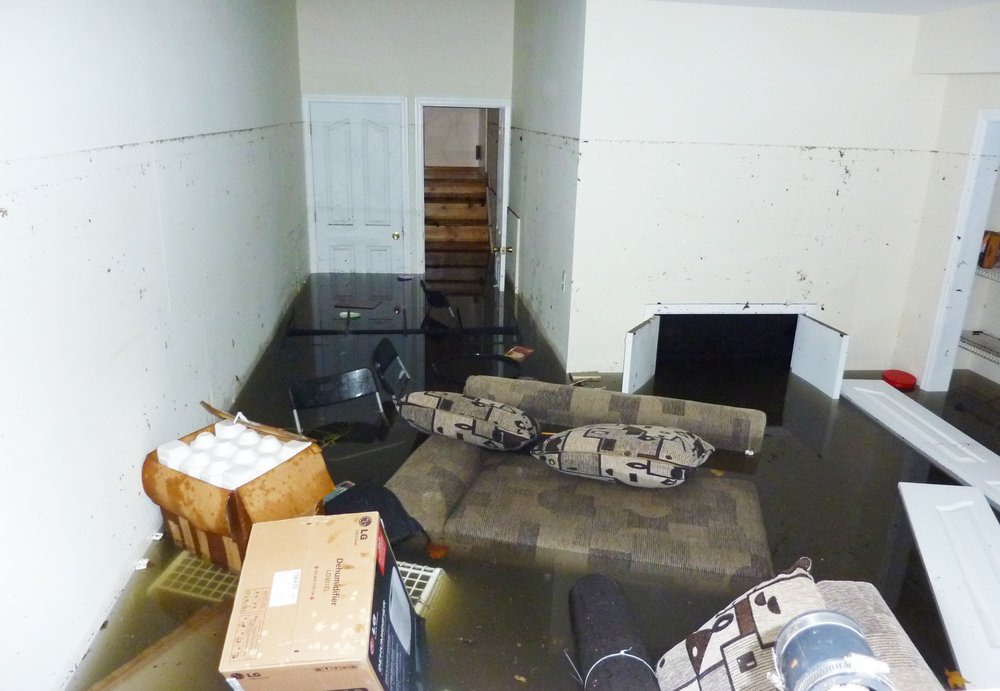
Can You Waterproof a Basement From the Inside?
So, your basement is damp, or maybe it just has a musty smell. You’ve been looking for solutions, and you’ve seen a variety of different products that claim they can waterproof your basement, like those used in this article by the DIY network. But can you really waterproof your basement fully from the inside? Ameri-Dry Basement Waterproofing, a professional crew of basement waterproofing contractors, say the answer is a bit more complicated than you might think.
Where is the Moisture Coming From?
Waterproofing the inside isn’t going to do you any good if the moisture is coming from inside—you’ll just be trapping it in there. So, the first thing you need to do is ensure that the dampness you’re noticing is actually originating outside of the basement. Here’s how:
- First, cut a piece of aluminum foil into a 12 inch by 12-inch square
- Tape the square to your basement walls with a length of tape along each side of the square, so that it is securely attached to the wall on all sides.
- Leave it in place for 24 hours.
Next, you’ll want to take a look at the square before you remove it from the wall. Is there condensation on the side that’s facing you? Then you have high humidity in your basement. That doesn’t, of course, mean that you don’t have any moisture coming in from outside, but it does mean that you need to take care of the humidity before you waterproof your walls.
Energystar.gov has some great tips for reducing indoor humidity, including:
- Using ventilation fans in rooms that produce moisture, like your kitchen and bathroom
- Ensure that your clothes dryer is vented directly outdoors
- Have an HVAC specialist check your heating and cooling systems to make sure that the airflow is correct
- Seal air and duct leaks
- Use a dehumidifier in the basement
If there’s no moisture on the outside of the foil, carefully remove it from the wall and check to see if there’s condensation on the inside of the foil. If so, your basement may be damp because the soil around your home is naturally very moist, whether because of a high water table or, perhaps, inefficient soil drainage.
If so, then waterproofing the inside of your basement may be one measure you can take to reduce basement moisture.
Methods for Waterproofing the Interior of Your Basement
There are a number of different methods (and types of products) you can use to waterproof your basement from the inside. The four most popular methods include:
- Waterproof concrete coatings: Thick, cement-like coatings that permanently adhere to your walls. They’re intended for concrete or masonry, like cinderblock walls. You’ll brush the material on using the type of brush recommended by that brand’s instructions. Most of these coatings can’t be applied to walls that have already been painted.
- Silicate concrete sealant: Sometimes these are referred to as “densifiers.” Like concrete coatings, they can’t be applied to painted walls. They are appropriate for masonry and cement walls, as well. They penetrate the wall, so they don’t flake off. Usually, once they are cured, you can paint them over them. Be sure to check the label, if that’s your plan.
- Plastic sheets/panels paired with a drainage system: This is one of the more expensive solutions; rather than trying to prevent the water from getting through the basement walls at all, it is trapped between the wall and the plastic. It then runs down the plastic and is collected by a drainage system that is emptied by a sump pump.
- Waterproofing interior paint: A specialized acrylic or latex paint that is applied in a very thick layer (or many thin layers, depending on the brand) to the interior of the basement wall.
Is Waterproofing From the Inside a Good Idea?
It may be—but it’s almost always better to prevent water from getting through the walls to start with, either by grading the soil outside of your foundation or waterproofing the exterior walls. Of course, this can be a difficult proposition, since it usually involves excavating your foundation to expose it, then sealing any cracks first. Once that’s done, you’ll have to apply a coating or a drainable system.
If this isn’t possible, or water is still getting in despite exterior waterproofing, then interior waterproofing is your best bet. Investigate each option and make your decision based on the materials your basement walls are made of, your budget, and your preferences as far as aesthetics. Also, take into account how long the method you choose will last, and how often it will need to be reevaluated, too. You may also want to have a consultation or two with a contractor; often they can give you a free estimate, which can give you a benchmark for the price range you prefer.






